S&P Global Offerings
Featured Topics
Featured Products
Events
S&P Global Offerings
Featured Topics
Featured Products
Events
S&P Global Offerings
Featured Topics
Featured Products
Events
Featured Products
Ratings & Benchmarks
By Topic
Market Insights
About S&P Global
Corporate Responsibility
Culture & Engagement
Investor Relations
Featured Products
Ratings & Benchmarks
By Topic
Market Insights
About S&P Global
Corporate Responsibility
Culture & Engagement
Investor Relations
S&P Global Offerings
Featured Topics
Featured Products
Events
Language
S&P Global — 28 Sep, 2022 — Global
By S&P Global
Start every business day with our analyses of the most pressing developments affecting markets today, alongside a curated selection of our latest and most important insights on the global economy.
A Mixed Outlook for Emerging Markets
Around the world, the “not-yet recession” weighs on central bankers and asset prices alike. Emerging markets are also stuck in a liminal state between economic growth and recession. Better-than-expected growth in some emerging markets has led to an upward revision of 2022 gross domestic product growth. But other emerging markets suffered a downward revision to their projected GDP numbers. It is the proverbial mixed bag.
Economists at S&P Global Ratings, led by Chief Economist for Global Markets Satyam Panday, released their quarterly economic outlook for emerging markets on Sept. 26. The S&P Global Ratings team revised its 2022 GDP forecast upward for a selection of emerging market economies, as the first-half 2022 growth of countries such as Brazil, Colombia, Indonesia and Turkey exceeded expectations. However, the team expects weaker growth in the second half.
The 2022 GDP growth forecasts for some emerging market economies were revised downward. Poland, South Africa, Thailand, the Philippines and Peru were all adjusted downward for reasons related to geopolitical tension, energy supply shortages and weaker-than-expected demand. China’s forecast also fell from a projected 3.3% GDP growth earlier this year to a revised 2.7% GDP growth this month. S&P Global Ratings said the revision to China’s growth forecast was due to restrictions under the government's zero-COVID policy, a challenging real estate market and negative sentiment.
Emerging markets in different regions around the world have different stories to tell. In emerging European, Middle Eastern and African economies such as Poland, Saudi Arabia, Turkey and South Africa, the exposure to external geopolitical and energy market shocks and different policy responses are shaping the outlook. In the Latin American emerging markets of Argentina, Brazil, Chile, Colombia, Mexico and Peru, growth is projected, but looks set to remain below the trend. The reopening of the Indian, Indonesian, Malaysian, Philippine, Thai and Vietnamese economies following pandemic-era restrictions is driving strong domestic demand, but the gloomy external outlook will create a drag on exports.
Across all emerging markets, the macroeconomic conditions that continue to create uncertainty and financial stress include China’s zero-COVID policy, the war in Ukraine and the trade-off between public debt management and macroeconomic stability. Hawkish monetary policy, particularly from the European Central Bank and U.S. Federal Reserve, has caused the currencies of emerging markets to depreciate against the U.S. dollar. Since the beginning of the year, the U.S. dollar has strengthened 10% against median emerging market currencies.
Overall, the downside risks haven't changed, and the forecast for GDP growth in emerging markets reflects that. But there are some bright spots. Many observers believe that China will move away from its zero-COVID policy after the first quarter of 2023. This will have positive knock-on effects for the global economy. Emerging market economies that export energy have also benefited from the increase in prices.
Today is Wednesday, September 28, 2022, and here is today’s essential intelligence.
Written by Nathan Hunt.
How COVID-19 Government Support Might Spark A New Era For Corporate Credit Risk
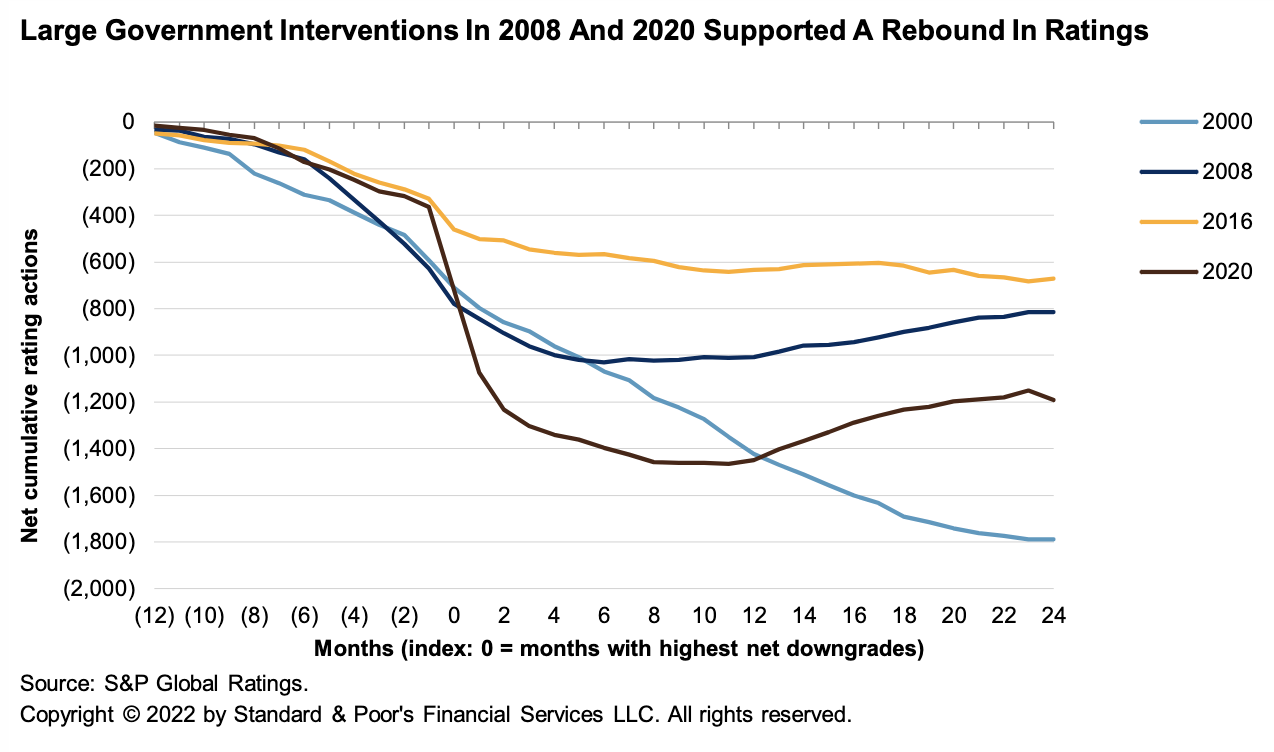
Massive government support in developed economies during the COVID-19 pandemic led to minimal corporate bankruptcies and defaults, despite historical levels of downgrades, in contrast with previous crises where we observed a robust correlation. Direct and indirect public support, through fiscal and monetary stimulus, provided an unexpected boost to both financial markets' and businesses' recovery, leading to a progressive recovery in corporate ratings to pre-pandemic levels.
—Read the report from S&P Global Ratings
Access more insights on the global economy >
Asia-Pacific Banks' Digital Opening Raises Cyber Risks

The threat of cyberattacks is rising in Asia-Pacific, and globally; increasingly interconnected banking systems are exposed to incursions that are rising in frequency, scale, and sophistication. While S&P Global Ratings believes banks in the region are reasonably prepared to manage such risks, an institution could be badly damaged in an attack, monetarily and reputationally. Industrywide collaboration and cross-border information sharing are crucial to strengthening cybersecurity, which is integral to the stability of banking systems.
—Read the report from S&P Global Ratings
Access more insights on capital markets >
APPEC: Asia, Europe Refiners To Eventually Figure Out, Adjust To Russian Crude Trade Complications
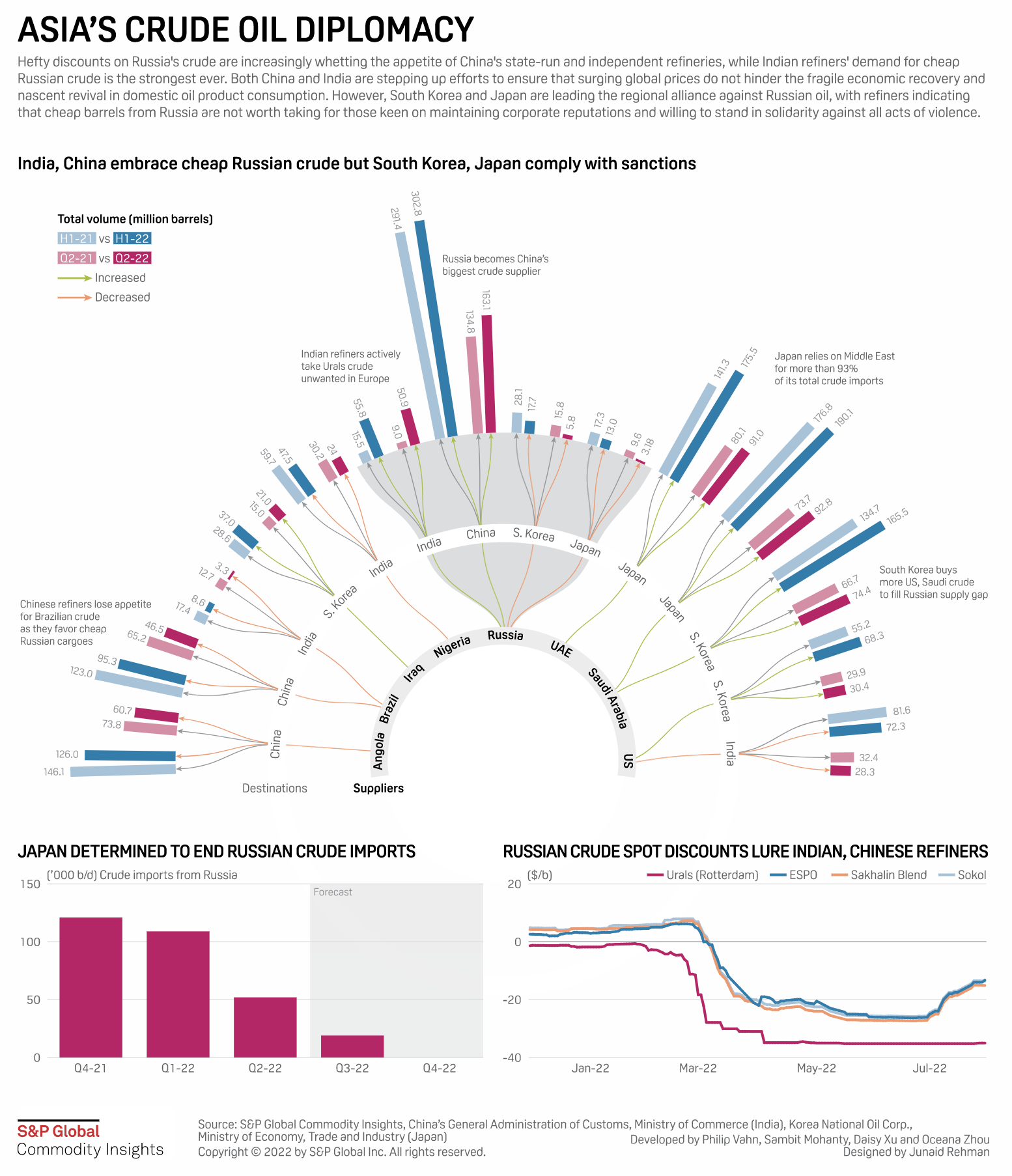
Asian and European refiners remain confused about how G7's plan to impose a price cap on seaborne Russian oil cargoes would function, but the oil companies would eventually find ways to have Russian crude supplies continue to flow in the market and manage alternative options to fill any gaps, industry executives and traders said Sept. 27. G7 nations are expected to finalize a price cap on Russian crude some 30-45 days ahead of Dec. 5, the date the cap is meant to take effect.
—Read the article from S&P Global Commodity Insights
Access more insights on global trade >
Rising Costs Complicate California's Rooftop Solar, Onsite Battery Future
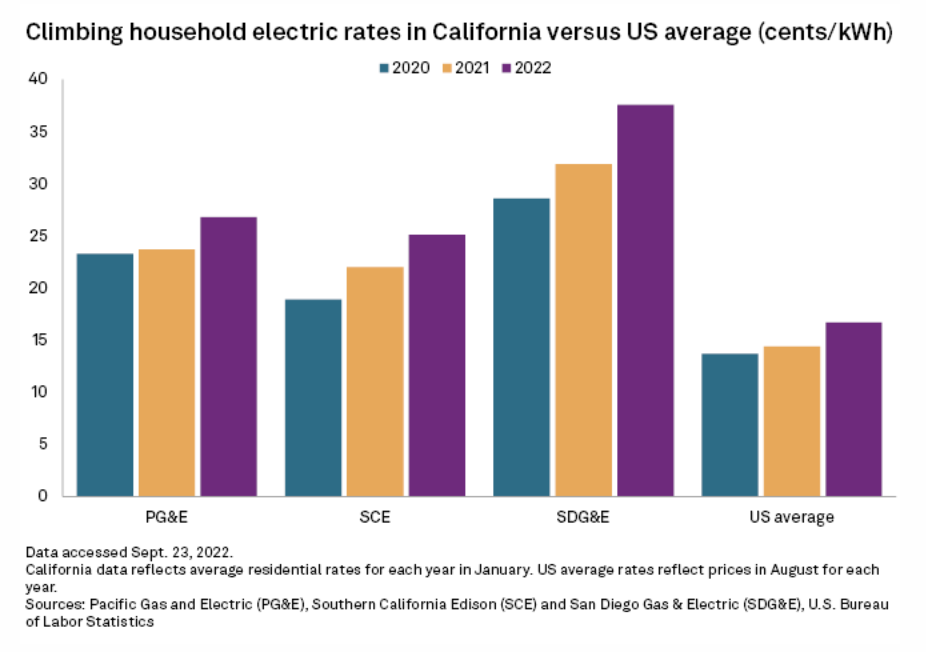
California's bold ambition to fully decarbonize what is effectively the world's fifth-largest economy before mid-century has become a defining mission for the state. But concerns are spreading over how to keep California's clean energy transition on track amid skyrocketing electricity rates, as reflected in the heated debate over reforming the state's decades-old rooftop solar program, known as net energy metering. This is part of a broader discussion over the future of distributed energy in the semi-deregulated market.
—Read the article from S&P Global Market Intelligence
Access more insights on sustainability >
Fuel For Thought: Oil Market Ponders Price Floor Amid Demand Destruction
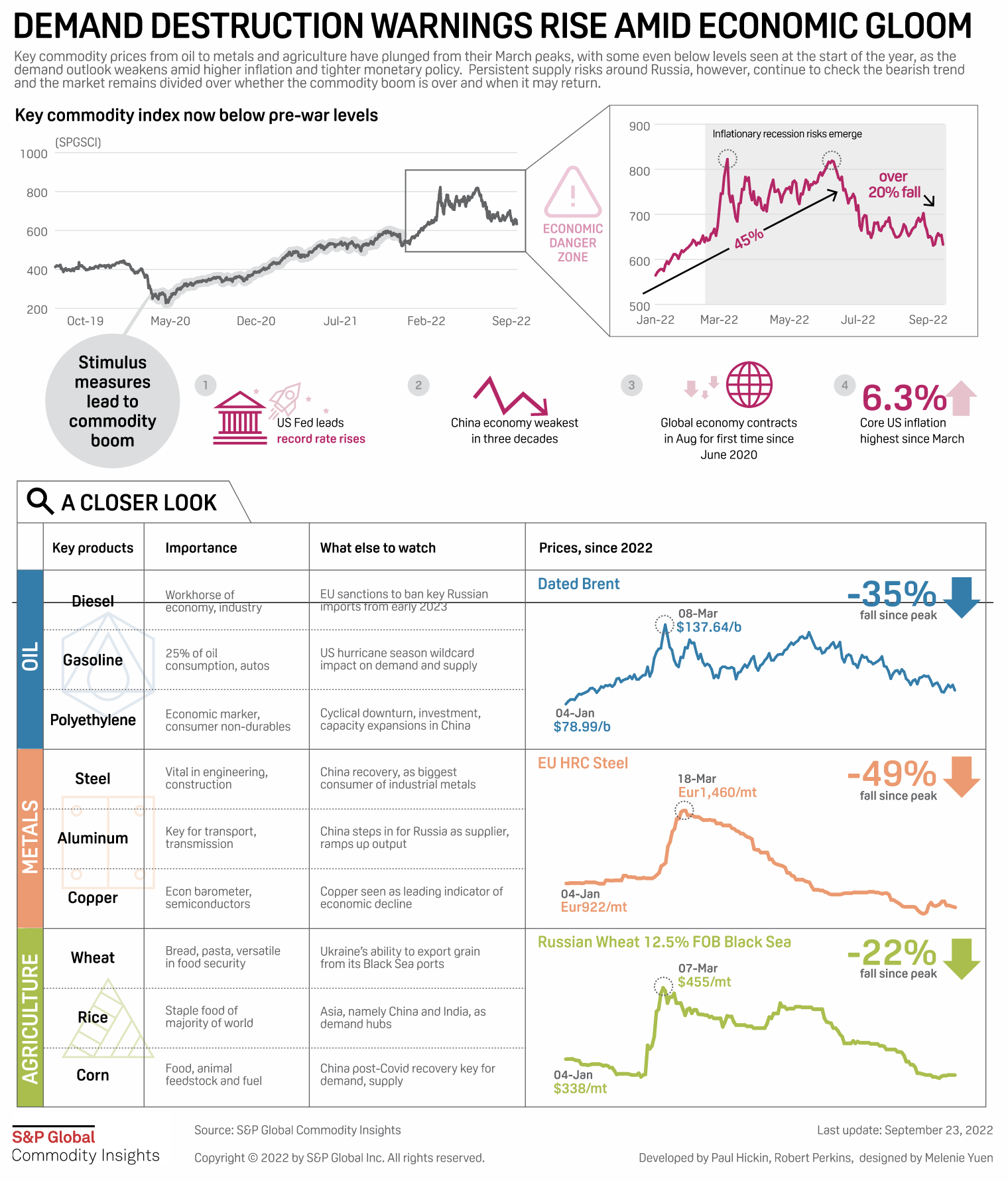
Commodities show little sign of shaking the bearish momentum amid a slew of economic warnings across the globe. Whether the market wants to push oil much below $90/b amid potential OPEC output cuts, looming Russian sanctions, and the end of SPR releases is the big question. Demand destruction may be met by supply reduction.
—Read the article from S&P Global Commodity Insights
Access more insights on energy and commodities >
U.K. Utility Services Provider Fulcrum Alerts Market To Cyber Incident
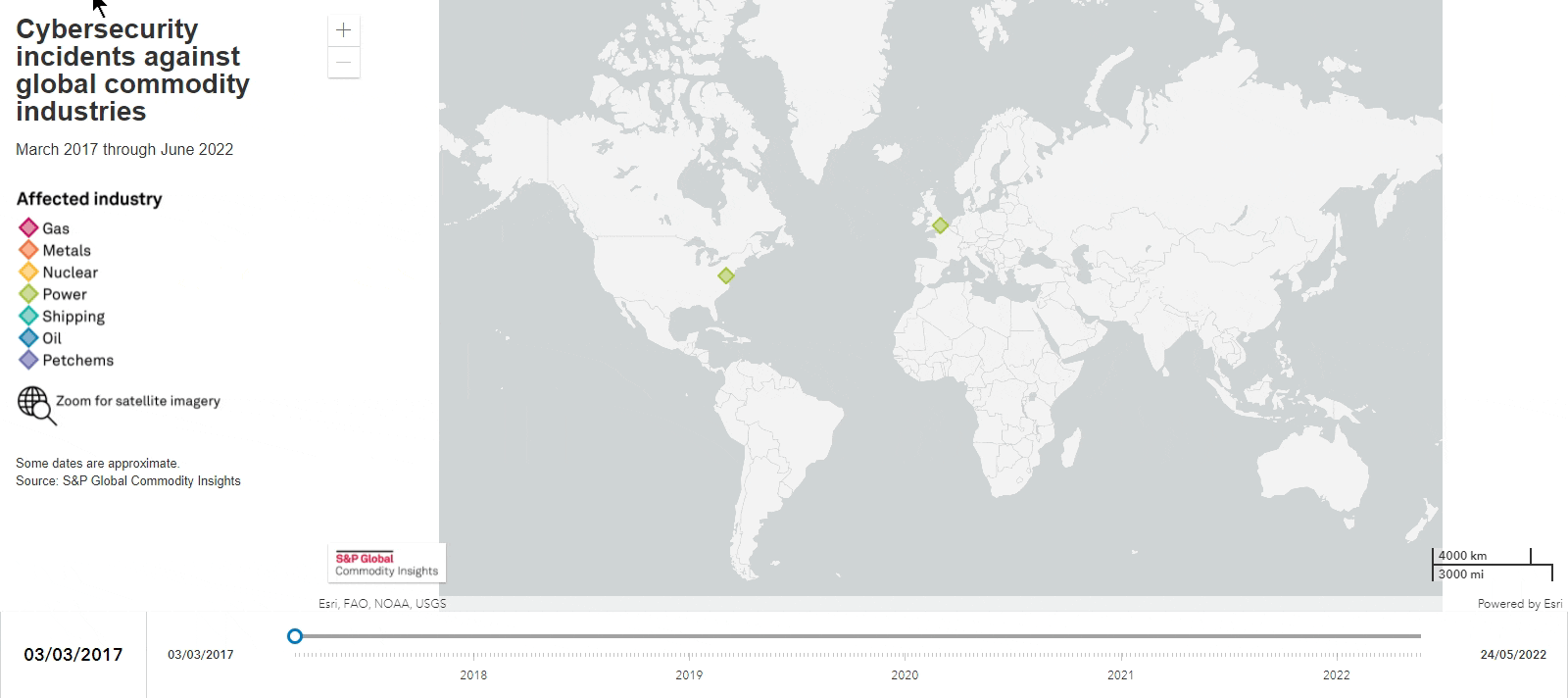
U.K. multi-utility infrastructure and services provider Fulcrum notified the market Sept. 27 of a cyber security incident on its network after detecting unauthorized activity. In July the U.K.'s National Cyber Security Centre issued a heightened threat warning in response to Russia's invasion of Ukraine, advising companies to prepare for "the long haul" when bolstering system security.
—Read the article from S&P Global Commodity Insights

